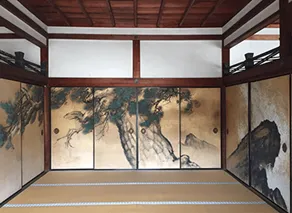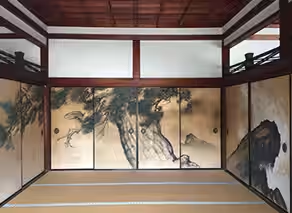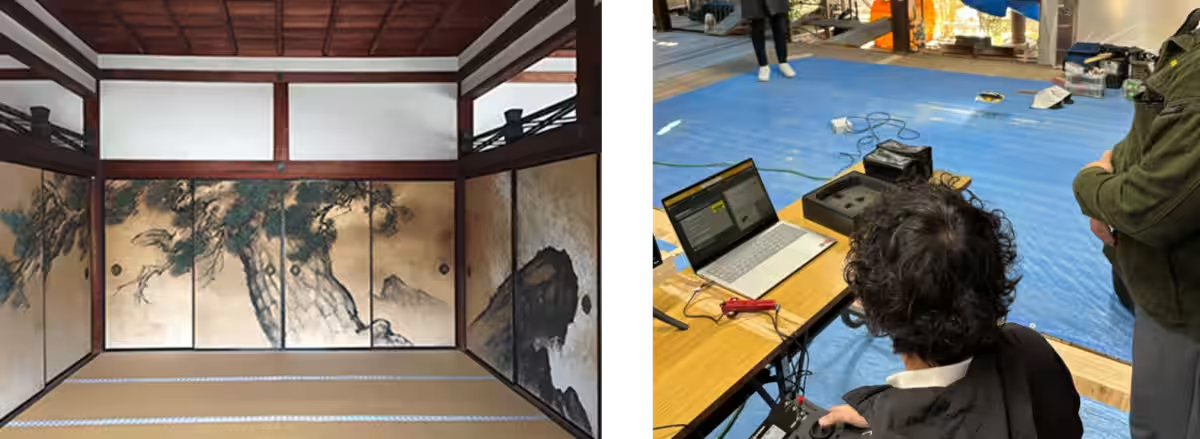

Innovative Drone Inspection Demonstration at Ninna-ji Temple in Collaboration with Yamada Shoji HD
A Leap into Modernity: Drone Inspections at Ninna-ji Temple
In a groundbreaking initiative, Liberaware, a Chiba-based company led by CEO Hongkyu Min, joined forces with Yamada Shoji Holdings to conduct a drone inspection demonstration at the historic Ninna-ji Temple, a UNESCO World Heritage Site. This collaboration aims to explore innovative solutions for routine maintenance in a country that constantly faces natural disasters such as earthquakes. Given that many structures, especially heritage sites, require long-term preservation, regular inspections of areas such as ceilings and crawl spaces are vital.
Liberaware's specially developed drone, dubbed IBIS2, was employed for this inspection project at Ninna-ji. By leveraging governmental subsidies, architects were able to devise repair plans tailored to each structure, further enhancing the initiative's effectiveness. Expert carpenters skilled in traditional techniques monitored the proceedings closely, ensuring that the integrity of this historic building remained intact throughout the inspection process.
Overview of the Inspection
- - Objective: To validate the effectiveness of small drones in inspecting underfloor and attic areas.
- - Location: Underneath the Shoin Hall of Ninna-ji Temple.
- - Approximate Floor Area: 196 square meters.
- - Drone Used: IBIS2.
- - Inspection Focus: Crawl spaces and ceilings.
- - Inspection Time Required: An hour for each area.
Key Insights from the Demonstration
The drone inspection has several significant advantages:
- - Can be utilized effectively by both architects in planning and carpenters during inspection and repair.
- - Enhances efficiency during preliminary assessments when determining specifications for the project.
- - Streamlines the process of verifying conditions, recording data, and measuring dimensions in attic inspections.
- - What traditionally took four people three days for initial assessments was slashed to half a day using the drone.
Comments from Ninna-ji Temple
Ninna-ji has long been devoted to preserving its cultural heritage, recently launching the Omiya Digital Museum Online, which allows visitors to appreciate its treasures from afar. The temple embraces modern efforts, such as converting historical structures like the Matsubokukan into accommodation facilities, thereby promoting its inherited culture for future generations. This recent use of drones signifies an efficient way to manage maintenance, ensuring the longevity of both existing cultural assets and the lineage of traditional craftsmanship.
Comments from Yamada Shoji HD
For over 120 years, Yamada Shoji has committed to enhancing resilience in urban areas through gas construction. Working with Liberaware on this demonstration confirms that drone inspections significantly improve both the workflow and safety in comparison to traditional methods. Recording cultural heritage digitally offers enhanced resilience against disasters while transcending time to communicate these values effectively.
The completion of this demonstration includes insights that will be further clarified in a press release issued by Yamada Shoji HD.
About Liberaware
Liberaware operates with the mission of creating a safer society for everyone. Specializing in developing compact drones designed for inspecting small, dark, and potentially hazardous indoor spaces, the company offers infrastructure inspection and maintenance solutions by processing the images collected by its drones. Pushing forward with the vision to "visualize unseen risks," Liberaware is dedicated to providing a safe and peaceful society.
- - Company Name: Liberaware, Inc.
- - CEO: Hongkyu Min
- - Location: Chuo 3-3-1, Chiba City, Chiba Prefecture
- - Established: August 22, 2016
- - Business Description: Drone services, digital twin business, and custom solution development.
- - Website: Liberaware


Topics Consumer Technology)










【About Using Articles】
You can freely use the title and article content by linking to the page where the article is posted.
※ Images cannot be used.
【About Links】
Links are free to use.